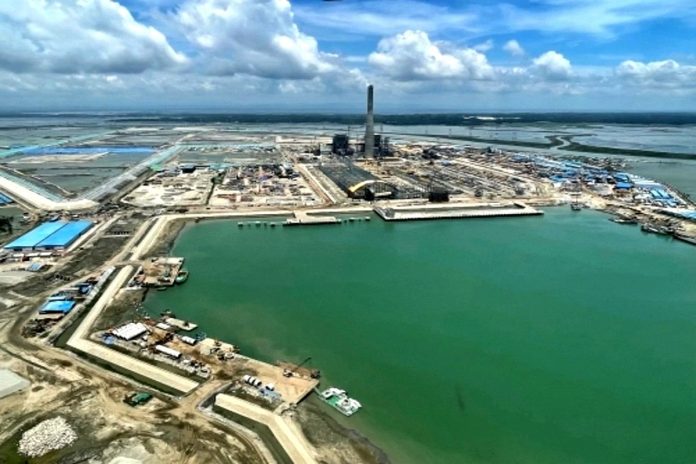Japan and India are collaborating under the “Free and Open Indo-Pacific” policy to improve connectivity networks between India and its neighbouring countries.
Once the Matarbari deep-sea port becomes operational and connectivity improves, it is likely that a large portion of the items currently imported through the Kolkata/Haldia Port will be shipped through the Matarbari port instead.
The Matarbari deep-sea port in Bangladesh, currently under development, is expected to become a crucial commercial hub for Bangladesh and the Bay of Bengal region.
It will facilitate the connection of industrial value chains with Northeast India, contributing to increased economic activity.
The port development in Cox’s Bazar District, Chittagong Division in Bangladesh is being funded by the Japan International Cooperation Agency (JICA) as part of the Bay of Bengal Industrial Growth Hubs initiative.
This initiative aims to promote industrial agglomeration along the Dhaka-Chittagong-Cox’s Bazar belt area and beyond.
Japan and India are collaborating under the “Free and Open Indo-Pacific” policy to improve connectivity networks between India and its neighbouring countries.
According to a comprehensive study conducted by the Shillong-based think-tank Asian Confluence, titled ‘Assessing Connectivity between Northeast India and Bangladesh: Towards a Prosperous Bay of Bengal Region’, the Matarbari port, which is being developed with assistance from Japan, is projected to become a major commercial centre for Bangladesh and South Asia as a whole.
The report highlights that once the Matarbari deep-sea port becomes operational and connectivity improves, it is likely that a large portion of the items currently imported through the Kolkata/Haldia Port will be shipped through the Matarbari port instead.
Japan’s investment in the Matarbari-Moheshkhali Integrated Infrastructure Development Initiative is expected to exceed $25 billion, with $15 billion allocated for public investment and $10 billion for private investment.
Japan’s involvement in Bangladesh’s connectivity development aligns with India’s efforts to upgrade the Mongla Port, road and power transmission networks, railway lines, and inland waterways.
India’s EXIM Bank has provided approximately $8 billion in exposure to Bangladesh.
This shift in transportation routes will have a significant impact on trade and logistics in the region, further enhancing the port’s importance and potential.
Significane of Matarbari port
The Matarbari port project serves as a pivotal junction uniting two influential economies within the Indo-Pacific region, namely those of India and Japan.
Matarbari port location (Global order)Matarbari port area (CPGBL)Matarbari port under construction (energy&power)
Among all the ports in Bangladesh, Matarbari is of significant importance due to its ability to handle larger cargo ships. It has a bulk cargo handling capacity of 16-38 million tonnes and a container capacity of 4.9 million TEU.
The Matarbari Deep Sea Port (DSP) has a water depth of 18.5 m and features a 14.3 km long and 300 m wide channel. In order to connect with the Matarbari port, the Japan International Cooperation Agency (JICA) will construct an access road and railway.
The first phase of this development is expected to open in 2027, along with the access road, while the second phase will be operational by 2030.
To fully unlock the potential of the Matarbari port, the successful completion of the Comprehensive Economic Partnership Agreement between Bangladesh and Japan, as well as between Bangladesh and India, is crucial. This will pave the way for the establishment of a trilateral free trade zone among the three nations.
According to the report, there is a need to enhance multi-modal connectivity between the Northeast Region (NER) and Bangladesh. This will not only boost the region’s competitiveness but also help bridge the development gaps.
Additionally, both parties should collaborate to improve trade facilitation and establish express corridors for the transhipment and transit of goods between the NER, Chattogram Port (formerly known as Chittagong Port), and/or Matarbari Port, as per the Economic Times report.
While Bangladesh has already allowed transhipment for the Northeast states through Chattogram and Mongla ports, the full operation of the Matarbari port will further enhance the potential of the sub-regional grouping known as BBIN (Bangladesh, Bhutan, India, Nepal). This connectivity will be crucial for the economic development of the broader Bay of Bengal region.


